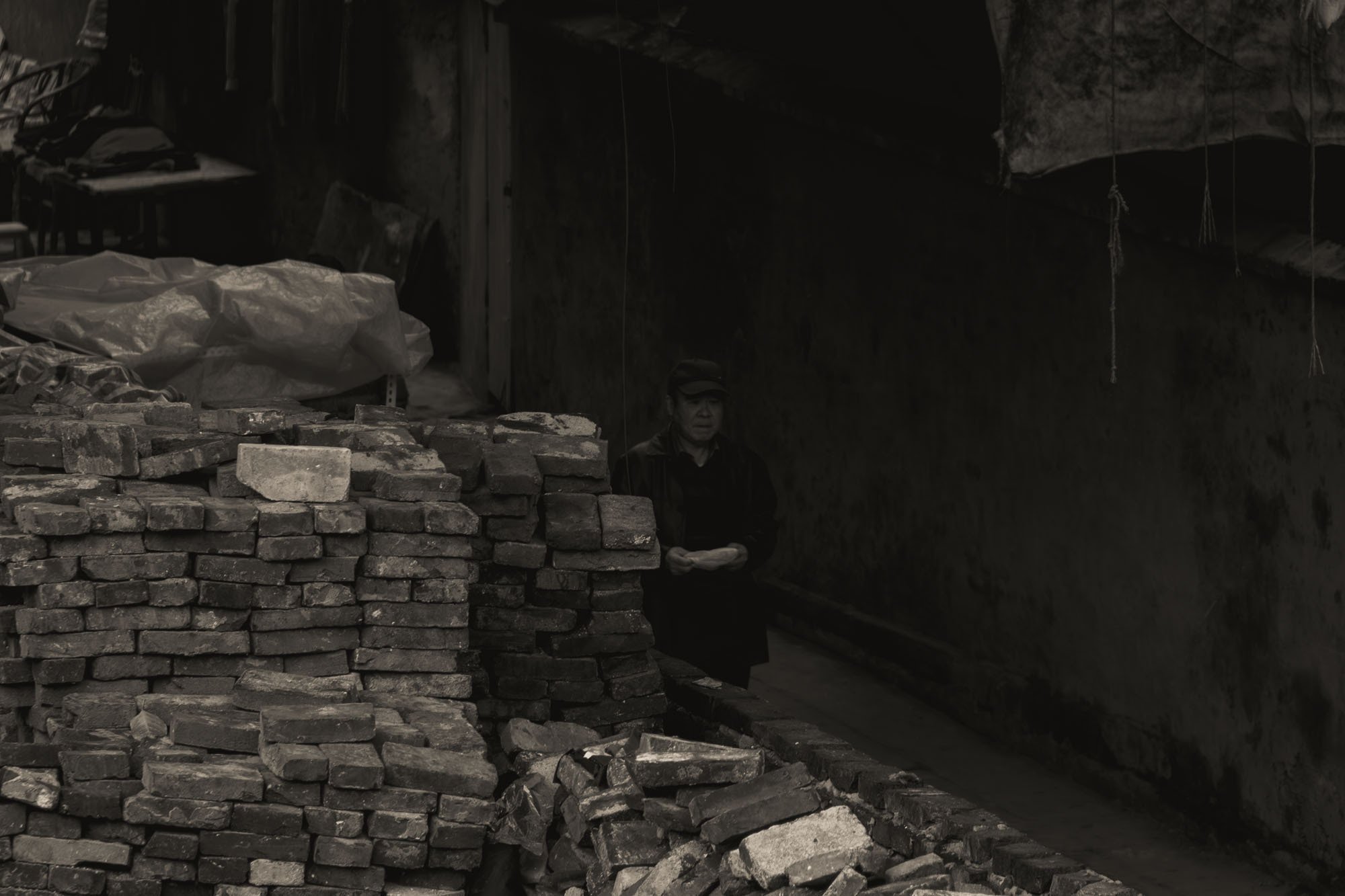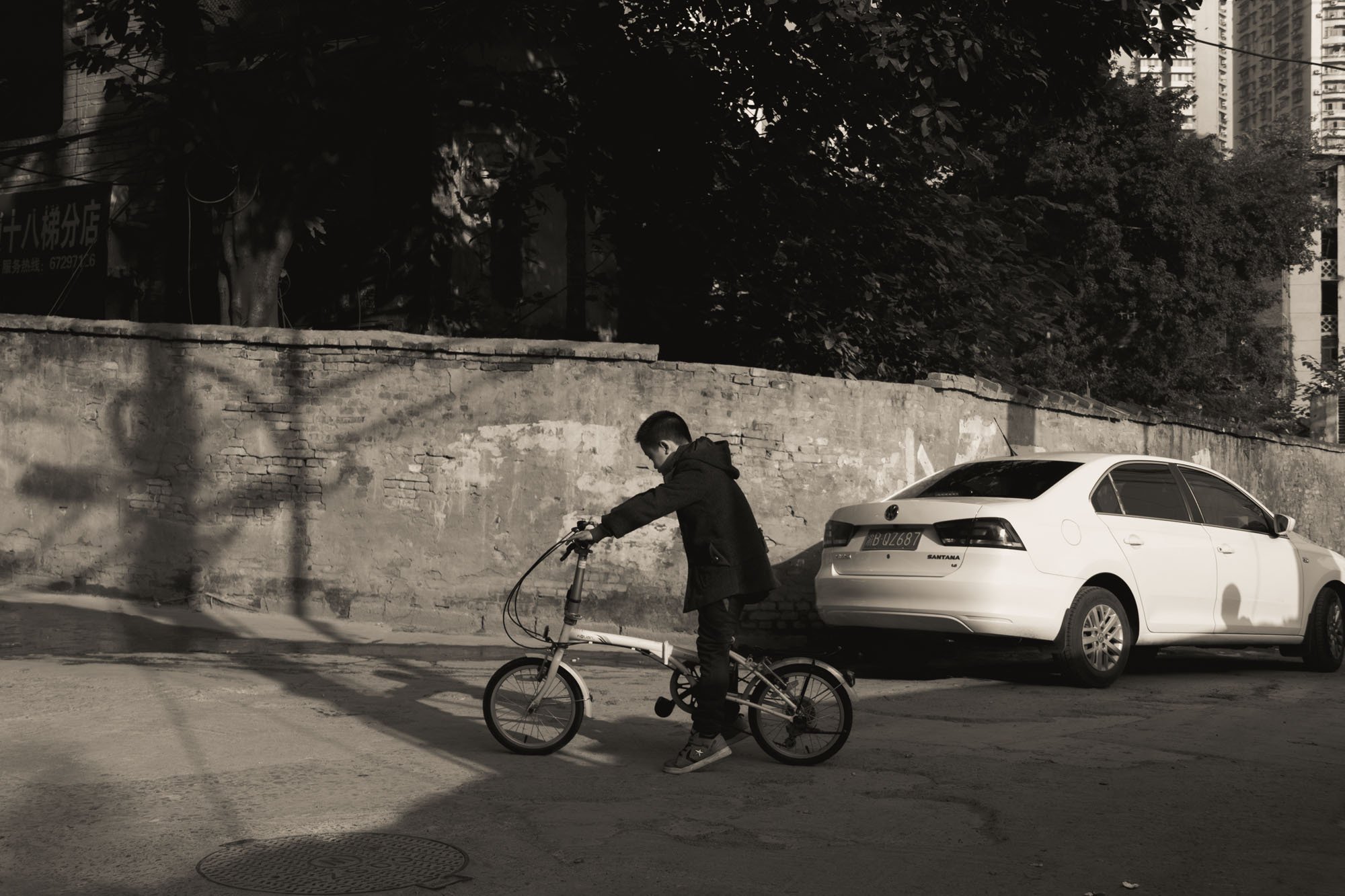My City: A Chongqing Story
Lost Shibati
In the past, the upper and lower halves of the Yuzhong District in Chongqing City seemed like two different worlds connected by Shibati. Most of the houses here were constructed from bamboo and mud, their roofs covered in tiles. Inside, a distinctive smell lingered—a blend of damp wood and earth, tinged with a hint of laundry detergent. Whenever it rained, water would seep through the roofs. During these times, adults would scramble onto the roofs to carefully retrieve fallen tiles and attempt repairs. However, for the children, this was a rare delight. They would play joyfully in the leaks under the awnings of the shops, gleefully catching raindrops as if they were treasures from the sky. Shop owners couldn’t help but caution the children’s parents. Soon, grandmothers would arrive to swiftly escort the children home, accompanied by gentle reproaches, thus concluding the rainy day game.
In this shantytown, many houses lacked kitchens, forcing residents to set up simple stoves on the streets to cook meals for their families. After purchasing goods from Chaotianmen Wholesale Market, small traders hurried to Shibati for dinner, drawn by its affordability and delicious offerings. Vendors selling Dingding sugar and knife sharpeners passed by, filling the air with the clinking of sugar and the sound of blades being honed. Despite this bustling scene, environmental and security challenges loomed large. Each street had only one public toilet, often described as unsanitary. Residents braved dark and damp conditions whenever nature called, encountering rats that roamed freely near sewer entrances. The ground was strewn with various types of household garbage, and discarded syringes were shockingly visible everywhere.
In 2009, a hopeful development swept through this shantytown: the Yuzhong District government of Chongqing City announced the reconstruction of Shibati. The government officially commenced the demolition project on July 28, 2010. By 2015, over 7,700 households had relocated to a new community with significantly improved living conditions.
In the winter of 2016, I visited Yuzhong to meet a classmate who had established her own educational institution after graduating from university. She recommended that I explore Shibati to experience Chongqing’s urban culture. Following her suggestion, I ventured into this central city shantytown for the first time. Despite the cold winter, the observation platform bustled with activity: people dancing, receiving pedicures, and chatting, creating a vibrant microcosm. Among them, a man in a hat was deeply engrossed in his dance, seemingly oblivious to his surroundings. As I moved through the dancing crowd, I gazed down upon Shibati, where many of its old houses were reduced to crumbling brick buildings or lay in ruins.
I descended slowly from the viewing platform, following winding stone steps towards the lower half of Yuzhong district. Along the road, makeshift stalls were scattered about: pancake makers flipped cookies in the glow of the fire; a noodle vendor stirred her noodles in boiling water; several fortune-tellers consulted clients on their birth dates, interpreting matters of marriage, career, and education; and second-hand goods vendors packed their wares while bargaining with customers. On both sides of the weathered walls, red and white signs stood out: "Demolition Office," "Pedestrians Pay Attention to Safety," "Chongqing Noodles," and "Dentist Ahead 50 Meters."
Pedestrians gathered around the Shibati signboard, eagerly pulling out their phones and cameras to capture this historic moment. Construction officially began on the Shibati project in May 2017. The Shibati dates back to the Ming (1368-1644) and Qing (1644-1911) dynasties. There are two legends explaining its name: one suggests there was once a well here, and residents had to climb 18 stone steps to fetch water, hence the name “Shibati”. Another theory posits that local residents built houses on the mountain, naturally forming stone steps along the streets. Every dozen steps or so, there was a terrace, creating a total of 18 sections, which gave rise to the name "Shibati."
"Girl, take more photos; Shibati will soon be gone," spoke an old man, his voice a blend of dignity and melancholy. As he moved from the ancient lower half of the city to the modern upper half, he removed his hat and waved to me—a gesture that felt like a farewell through my lens.
As the old man’s words lingered, I descended into a corner of Shibati where sunlight starkly illuminated exposed walls and cracked concrete. A trickle of sewage meandered beside the walls of abandoned shops with faded signs, including one that read "Shibati Branch of the Most Beautiful Electrical Appliances." This corner resembled an open-air stage, where life seemed to persist despite the surrounding decay. The last residents of this once-thriving community prepared their final dinners, clinging to familiar routines as if nothing had changed.
The scene was ever-changing. People bustled about: some rushed to the market, while others carried bags of groceries. A woman with fresh lettuce hesitated beside the glutinous rice cakes, possibly deciding whether to buy a treat for her child. An elderly grandmother trimmed vegetables while listening to the chatter of neighbors and visitors. A woman hurried past, head bowed, with a girl in tow. A man, walking with a spring in his step, suddenly raised his hands mid-stride, as if caught in an unexpected dance. A child enjoyed a glutinous rice cake with relish, while a middle-aged man beamed as he spoke on the phone.
Amidst this vibrant daily life stood a bangbang, his brow furrowed. His right hand gripped a sleek bamboo stick with strings—tools of his trade—while his left hand tapped the stick thoughtfully. He seemed lost in contemplation about finding affordable lodgings after leaving Shibati.
A grandmother in a flowered quilted jacket had just bought oranges and sat by the wall, waiting for her husband. The slanting sun made the patterns on her floral jacket appear vibrant. When her husband approached, he reached for the bag of oranges, but she gently removed his hand and shook her head. They exchanged a silent glance before something in the direction they had come from drew their curious attention. Together, they turned and walked slowly up the stone steps. The sun cast mottled shadows on their backs, as if the years themselves were gently trailing behind them.
As I walked through the ruins, the wall behind me crumbled, revealing wood scorched by fireworks among the broken bricks. The debris in front of the dilapidated house told its own story: two dry branches propped up a blue men’s coat and a white plastic bag. The wind fluttered these items like tattered flags, relics of families who had long since departed.
Not far from this scene, an L-shaped, five-story brick building from the 1950s and 1960s, originally an elementary school, stood silently. Washed clothes and sheets hung in the corridors on each floor, their presence a lingering reminder of lives once lived. In the shadow of this building, a man rummaged through cluttered remnants, while a woman sat on the edge of the ruins, her face etched with a forlorn expression. They seemed to embody the weight of a past that stubbornly clung to the present.
As I continued downhill, I passed a fruit vendor asleep on the driver’s seat of his tricycle, his exhausted form a stark contrast to the vibrant produce he sold. A little further along, I came upon a four-story yellow building, its facade partially obscured by debris. There, a worker with a cigarette tucked behind his ear was diligently laying tiles on the roof.
Built in 1898, this building once served as the French Consulate. Established in Chongqing in March 1896, the consulate was responsible for overseeing several provinces, including Sichuan, Guizhou, Gansu, Xinjiang, Qinghai, and Tibet.
During the War of Resistance Against Japan, Chongqing became China’s wartime capital. From February 18, 1938, to August 23, 1943, Japan carried out 218 bombing raids on the city, with over 9,000 aircraft sorties and more than 11,500 bombs dropped. The bombings caused over 10,000 deaths, destroyed more than 17,600 homes, and transformed the bustling downtown into a wasteland. Amid the chaos, children’s cries pierced through the smoke and gunfire.
Yet, the yellow building, resilient through over a century of wind and rain, still stands in the lower half of the city. It bears silent witness to the tumult of history, each brick and tile a chronicle of time’s passage. The breeze rustling through its corridors seems to whisper tales of endurance and memory, making this building not just a relic, but a testament to the enduring spirit of a city marked by both struggle and survival.
The winter sunshine was brief and warm, like the fleeting bloom of an epiphyllum, vanishing almost immediately and leaving behind the usual cold. The owner of the shoe shop, his hands in his pockets, leaned against the wall, observing the lively business of the neighboring store with a hint of discontent. On the street, a tricycle displayed video discs, drawing the attention of passersby who paused to watch but made no purchases. An old man, leaning on a cane, stood curiously behind the tricycle, peering into my camera lens. He had just passed by a dilapidated building, perfectly aligning with my shot. As I turned the corner, I was unexpectedly stopped by a man with slurred speech, gesticulating animatedly as he spoke. He pointed toward the building behind the wall, and I captured the moment as he turned his head. When he saw the photograph, his anger melted away, replaced by an innocent, childlike smile.
I left Chongqing quickly for work, as if I were merely passing through. It was a city where young people often struggled to find opportunities in the arts and culture sector. At that time, I couldn’t have foreseen the strong bond I would develop with this community. Reflecting on my career pursuit in Shanghai back in 2019—the most economically active and open city in China—I was filled with naivety and eagerness to transition from the booming online art media field to establishing a photography brand offline, with hopes of launching an international photography center.
When the first photography store opened, I received a call from my mom. She told me she had bought an apartment near the Shibati as a gift for my 28th birthday. However, shortly after the third photography store, which was intended to be the brand’s flagship, had opened, the investor suddenly withdrew his support. This forced my team to close all three stores with heavy hearts. Then COVID-19 struck, an unforeseen storm that swept across the globe. I returned to the lower half of Chongqing, but this time not as a visitor—rather, as a new resident. The city was no longer just a memory of travel; it was now a place where I lived.
"This is tourists’ Shibati, not my Shibati," a taxi driver said nonchalantly. Born and raised here, with a family of his own, he saw Shibati as a once-familiar neighborhood filled with intimate memories and everyday life. However, as the original residents moved away, the traces of daily routines, cherished stories, and the echoes of a mother calling her children home faded into memory. This change reflects a broader sense of helplessness brought about by the city’s transformation.
Chongqing, a city undergoing rapid and significant changes, had high hopes for Shibati to become a proud symbol for its citizens. Yet, fourteen years later, the Shibati project—spanning 88 mu (about 58,696 square meters)—has not lived up to its expectations. Instead, it has seen its ambitious vision burst like a bubble.
Today, Shibati presents a clean and safe environment, with a viewing platform proudly displaying "Chongqing Shibati Traditional Style Blocks." Tourists flock to the area, taking breaks and using their phones and cameras to capture the scene. The often gray, foggy sky of Chongqing casts a melancholic veil over the dense black brick buildings, which now resemble a concrete forest. Around this area, modern high-rises and luxury apartments are rapidly emerging, contrasting sharply with the traditional style of Shibati.
When I took the elevator down to present-day Shibati, I was overwhelmed by a sense of disappointment. Although the project was intended to honor tradition and reflect the city’s history, it seems to have lost its connection with contemporary life, becoming overly focused on tourism. The air was heavy with the sharp, pungent scent of fresh paint. Specialty stores selling hot pot, beef, and mahua crowd both sides of the steps, their noisy stereos competing for attention. The pseudo-classical architecture and uniform products create an illusion of being in Chongqing’s Ciqikou ancient town or a similar commercial pseudo-classical street found in other Chinese cities. Without the sloping ground and surrounding landscape, it would be challenging to recognize this as Shibati.
The remodeled Shibati struggles to attract citizens and evoke their memories and emotions. It seems detached from the nostalgia and affection that once characterized this beloved place. As I explored, I searched for stores and foods that might resonate with me, but nothing stood out. Disheartened, I decided to leave and explore neighborhoods that still reflect genuine life—places where I could find both long-standing, cherished eateries and innovative, unique restaurants. There, I hoped to satisfy my craving for the true essence of Chongqing and rediscover the pride and nostalgia of its people.
















































































